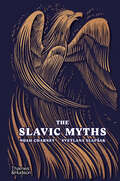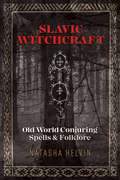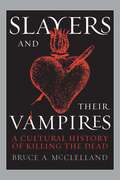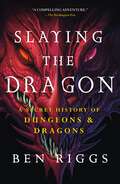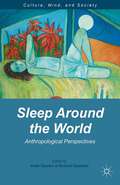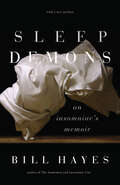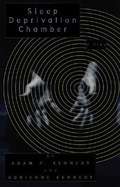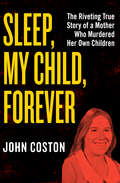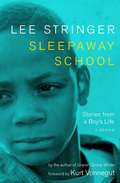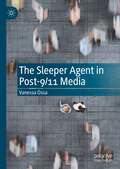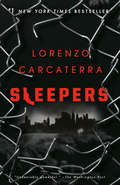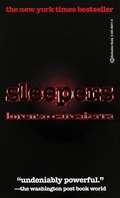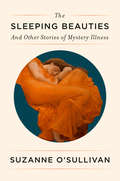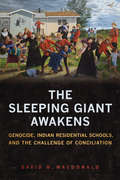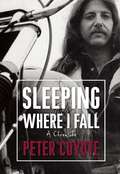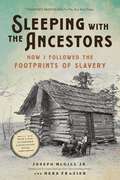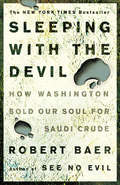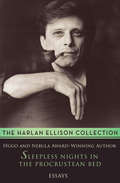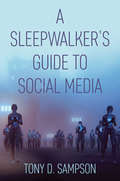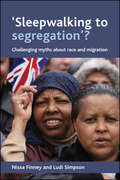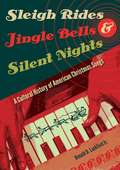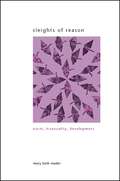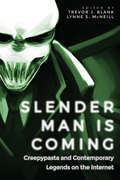- Table View
- List View
The Slavic Myths
by Noah Charney Svetlana SlapšakA Pulitzer-nominated author and one of the great public intellectuals of Slavic culture bring to life the unfamiliar myths and legends of the Slavic world. In the first collection of Slavic myths for an international readership, Noah Charney and Svetlana Slapšak expertly weave together the ancient stories with nuanced analysis to illuminate their place at the heart of Slavic tradition. While Slavic cultures are far-ranging, comprised of East Slavs (Russia, Ukraine, Belarus), West Slavs (the Czech Republic, Slovakia, Poland), and South Slavs (the countries of former Yugoslavia plus Bulgaria), they are connected by tales of adventure and magic with roots in a common lore. In the world of Slavic mythology we find petulant deities, demons and fairies, witches, and a supreme god who can hurl thunderbolts. Gods gather under the World Tree, reminiscent of Norse mythology’s Yggdrasill. The vampire—usually the only Serbo-Croatian word in any foreign-language dictionary—and the werewolf both emerge from Slavic belief. In their careful analysis and sensitive reconstructions of the myths, Charney and Slapšak unearth the Slavic beliefs before their distortion first by Christian chroniclers and then by nineteenth-century scholars seeking origin stories for their newborn nation states. They reveal links not only to the neighboring pantheons of Greece, Rome, Egypt, and Scandinavia, but also the belief systems of indigenous peoples of Australia, the Americas, Africa, and Asia. Specially commissioned illustrations inspired by traditional Eastern and European folk art bring the stories and their cultural landscape to life.
Slavic Witchcraft: Old World Conjuring Spells and Folklore
by Natasha HelvinA practical guide to the ancient magical tradition of Russian sorcery and Eastern Slavic magical rites • Offers step-by-step instructions for more than 300 spells, incantations, charms, amulets, and practical rituals for love, career success, protection, healing, divination, communicating with spirits and ancestors, and other challenges and situations • Reveals specific places of magical power in the natural world as well as the profound power of graveyards and churches for casting spells • Explores the folk history of this ancient magical tradition, including how the pagan gods gained new life as Eastern Orthodox saints, and shares folktales of magical beings, including sorceresses shapeshifting into animals and household objects Passed down through generations, the Slavic practice of magic, witchcraft, and sorcery is still alive and well in Russia, the Ukraine, and Belarus, as well as the Balkans and the Baltic states. There are still witches who whisper upon tied knots to curse or heal, sorceresses who shapeshift into animals or household objects, magicians who cast spells for love or good fortune, and common folk who seek their aid for daily problems big and small. Sharing the extensive knowledge she inherited from her mother and grandmother, including spells of the “Old Believers” previously unknown to outsiders, Natasha Helvin explores in detail the folk history and practice of Russian sorcery and Eastern Slavic magical rites, offering a rich compendium of more than 300 spells, incantations, charms, and practical rituals for love, relationships, career success, protection, healing, divination, averting the evil eye, communicating with spirits and ancestors, and a host of other life challenges and daily situations, with complete step-by-step instructions to ensure your magical goals are realized. She explains how this tradition has only a thin Christian veneer over its pagan origins and how the Slavic pagan gods and goddesses acquired new lives as the saints of the Eastern Orthodox Church. She details how the magical energy for these spells and rituals is drawn from the forces of nature, revealing specific places of power in the natural world as well as the profound power of graveyards and churches for casting spells. She explores the creation of amulets and talismans, the importance of icons, and the proper recital of magical language and actions during spells, as well as how one becomes a witch or sorceress. Offering a close examination of these two-thousand-year-old occult practices, Helvin also includes Slavic folk advice, adapted for the modern era. Revealing what it means to be a Slavic witch or sorceress, and how this vocation pervades all aspects of life, she shows that each of us has magic within that we can use to take control of our own destiny.
Slavoj Zizek (Routledge Critical Thinkers)
by Tony MyersSlavoj Zizek is no ordinary philosopher. Approaching critical theory and psychoanalysis in a recklessly entertaining fashion, Zizek's critical eye alights upon a bewildering and exhilarating range of subjects, from the political apathy of contemporary life, to a joke about the man who thinks he's a chicken, from the ethicial heroism of Keanu Reeves in Speed, to what toilet designs reveal about the national psyche. Tony Myers provides a clear and engaging guide to Zizek's key ideas, explaining the main influences on Zizek's thought (most crucially his engagement with Lacanian psychoanalysis) using examples drawn from popular culture and everyday life. Myers outlines the key issues that Zizek's work has tackled, including: What is a Subject and why is it so important? The Imaginary, the Symbolic and the Real What is so terrible about Postmodernity? How can we distinguish reality from ideology? What is the relationship between men and women? Why is Racism always a fantasy? Slavoj Zizek is essential reading for anyone wanting to understand the thought of the critic whom Terry Eagleton has described as "the most formidably brilliant exponent of psychoanalysis, indeed of cultural theory in general, to have emerged in Europe for some decades.
Slayers and Their Vampires: A Cultural History of Killing the Dead
by Bruce A. McclellandMcClelland (PhD, Slavic Studies, U. of Virginia) traces the cultural meaning of vampire tales from their Slavic origins in the Balkans to recent television productions such as Buffy the Vampire Slayer. In doing so, he draws attention to what he sees as the equally symbolic figure of the vampire slayer and the significance of the relationship between the two. He finds the origins of the Slavic vampire in refusals to abandon pagan beliefs and rituals proscribed by the Eastern Orthodox Church, noting that this historical aspect of the vampire is implicitly present in modern times. He then traces the transformation of the vampire and the origins of the vampire slayer in the mid-eighteenth century, arguing that originally, the vampire slayer may have its origins in Central European shamanism. He later explores Western European appropriations of the vampire through scientific and Catholic perspectives and concludes with explorations of the symbology of Van Helsing in Bram Stoker's Dracula and Buffy of the above-mentioned television series. Annotation ©2006 Book News, Inc. , Portland, OR (booknews. com)
Slaying the Dragon: A Secret History of Dungeons & Dragons
by Ben RiggsRole-playing game historian Ben Riggs unveils the secret history of TSR— the company that unleashed imaginations with Dungeons & Dragons, was driven into ruin by disastrous management decisions, and then saved by their bitterest rival.Co-created by wargame enthusiasts Gary Gygax and Dave Arneson, the original Dungeons & Dragons role-playing game released by TSR (Tactical Studies Rules) in 1974 created a radical new medium: the role-playing game. For the next two decades, TSR rocketed to success, producing multiple editions of D&D, numerous settings for the game, magazines, video games, New York Times bestselling novels by Margaret Weis, Tracy Hickman, and R. A. Salvatore, and even a TV show! But by 1997, a series of ruinous choices and failed projects brought TSR to the edge of doom—only to be saved by their fiercest competitor, Wizards of the Coast, the company behind the collectible card game Magic: The Gathering.Unearthed from Ben Riggs’s own adventurous campaign of in-depth research, interviews with major players, and acquisitions of secret documents, Slaying the Dragon reveals the true story of the rise and fall of TSR. Go behind the scenes of their Lake Geneva headquarters where innovative artists and writers redefined the sword and sorcery genre, managers and executives sabotaged their own success by alienating their top talent, ignoring their customer fanbase, accruing a mountain of debt, and agreeing to deals which, by the end, made them into a publishing company unable to publish so much as a postcard.As epic and fantastic as the adventures TSR published, Slaying the Dragon is the legendary tale of the rise and fall of the company that created the role-playing game world.
Sleep Around the World
by Katie Glaskin Richard ChenhallAlthough humans slumber for approximately one third of our lives, sleep itself is vastly understudied. This volume provides a comparative frame through which we can understand the myriad ways in which sleep reflects and embodies culture as contributors examine aspects of sleep in various countries and contexts.
Sleep Demons: An Insomniac's Memoir
by Bill Hayes“A lovely weave of memory and science, great characters and compassionate humor” from the author of Sweat: A History of Exercise (Anne Lamott).We often think of sleep as mere stasis, a pause button we press at the end of each day. Yet sleep is full of untold mysteries—eluding us when we seek it too fervently, throwing us into surreal dream worlds when we don’t, sometimes even possessing our bodies so that they walk and talk without our conscious volition. Delving into the mysteries of his own sleep patterns, Bill Hayes marvels, “I have come to see that sleep itself tells a story.”An acclaimed journalist and memoirist—and partner of the late neurologist Oliver Sacks—Hayes has been plagued by insomnia his entire life. The science and mythology of sleep and sleeplessness form the backbone to Hayes’s narrative of his personal battles with sleep and how they colored his waking life, as he threads stories of fugitive sleep through memories of growing up in the closet, coming out to his Irish Catholic family, watching his friends fall ill during the early years of the AIDS crisis in San Francisco, and finding a lover. An erudite blend of science and personal narrative, Sleep Demons offers a poignant introduction to the topics for which Hayes has since become famous, including art, eros, city life, the history of medical science, and queer identity.“This intimate and beautifully written book brings scientific research alive in a heartfelt and deeply personal narrative.” —The Guardian“Memoir, history, and science come together and apart again in a book that reads very much like a dream.” —Out magazine
Sleep Deprivation Chamber
by Adrienne Kennedy Adam KennedyBased on an actual experience, Sleep Deprivation Chamber depicts the emotional devastation of police brutality and the criminal justice system on a highly educated, middle class black family.
Sleep in Early Modern England
by Sasha HandleyA riveting look at how the early modern world revolutionized sleep and its relation to body, mind, soul, and society Drawing on diverse archival sources and material artifacts, Handley reveals that the way we sleep is as dependent on culture as it is on biological and environmental factors. After 1660 the accepted notion that sleepers lay at the mercy of natural forces and supernatural agents was challenged by new medical thinking about sleep's relationship to the nervous system. This breakthrough coincided with radical changes shaping everything from sleeping hours to bedchambers. Handley's illuminating work documents a major evolution in our conscious understanding of the unconscious.
Sleep, My Child, Forever: The Riveting True Story of a Mother Who Murdered Her Own Children (Onyx True Crime Ser. #Vol. 335)
by John CostonThe dark double life of Ellen Boehm, the mother who murdered her two sons—and nearly killed her daughter. Ellen Boehm, a single mom from St. Louis, Missouri, appeared devoted to her children. But in reality, she was unequipped for motherhood, financially strapped, and desperate. Within a year of each other, her sons, ages two and four, died mysteriously, and Boehm&’s eight-year-old daughter then suffered a near-fatal mishap when a hair dryer fell into the girl&’s bath. While neighbors wondered how Boehm remained so calm through it all, Det. Sgt. Joseph Burgoon of St. Louis Homicide had darker suspicions. Burgoon soon unraveled a labyrinth of deception, greed, and obsession that revealed a cold-blooded killer whose get-rich-quick scheme came at the cost of her children&’s lives. Boehm had taken out insurance policies on her children with six different companies totaling nearly $100,000. Using police reports, case documents, and photos, journalist John Coston recreates the events that led to one mother&’s unspeakable acts of filicide—and a cop&’s relentless pursuit of the truth.
Sleepaway School: Stories From A Boy's Life -- A Memoir
by Lee StringerLike his brother before him, Stringer was surrendered to foster care, shortly after birth, by his unwed and underemployed mother--a common practice for unmarried women in mid-century America. Less common was that she returned six years later to reclaim her children. Rather than leading to a happy ending, though, this is where Stringer's story begins. The clash of being poor and black in an affluent, largely white New York suburb begins to foment pain and rage which erupts, more often than not, when he is at school. One violent episode results in his expulsion from the sixth grade and his subsequent three-year stint at Hawthorne, the "sleepaway school" of the title.What follows is an intensely personal, American journey: a universal story of childhood where childhood universals are absent. We experience how a child fashions his life out of the materials given to him, however threadbare. This is a "boy-meets-world" story, the chronicle of one child's struggle simply to be.
The Sleeper Agent in Post-9/11 Media
by Vanessa OssaThis book examines the figure of the sleeper agent as part of post-9/11 political, journalistic and fictional discourse. There is a tendency to discuss the terroristic threat after 9/11 as either a faraway enemy to be hunted down by military force or, on the other hand, as a ubiquitous, intangible threat that required constant alertness at home. The missing link between these two is the sleeper agent – the foreign enemy hiding among US citizens. By analyzing popular television shows, several US comic books, and a broad variety of Hollywood films that depict sleeper agents direct or allegorically, this book explores how a shift in perspective—from terrorist to sleeper agent—brings new insights into our understanding of post-9/11 representations of terrorism. The book’s interdisciplinary focus between media studies, cultural studies, and American studies, suggests that it will find an audience in a variety of fields, including historical research, narratology, popular culture, as well as media and terrorism studies.
Sleepers
by Lorenzo CarcaterraNEW YORK TIMES BESTSELLER * For fans of Game of Silence, Sleepers is the extraordinary true story of four men who take the law into their own hands. This is the story of four young boys. Four lifelong friends. Intelligent, fun-loving, wise beyond their years, they are inseparable. Their potential is unlimited, but they are content to live within the closed world of New York City's Hell's Kitchen. And to play as many pranks as they can on the denizens of the street. They never get caught. And they know they never will. Until one disastrous summer afternoon. On that day, what begins as a harmless scheme goes horrible wrong. And the four find themselves facing a year's imprisonment in the Wilkinson Home for Boys. The oldest of them is fifteen, the youngest twelve. What happens to them over the course of that year--brutal beatings, unimaginable humiliation--will change their lives forever. Years later, one has become a lawyer. One a reporter. And two have grown up to be murderers, professional hit men. For all of them, the pain and fear of Wilkinson still rages within. Only one thing can erase it. Revenge. To exact it, they will twist the legal system. Commandeer the courtroom for their agenda. Use the wiles they observed on the streets, the violence they learned at Wilkinson. If they get caught this time, they only have one thing left to lose: their lives. Praise for Sleepers "Undeniably powerful, an enormously affecting and intensely human story . . . Sleepers is a thriller, to be sure, but it is equally a wistful hymn to another age."--The Washington Post Book World "A gut-wrenching piece of work . . . [Lorenzo] Carcaterra's graphic narrative grips like gunfire in a dark alley."--The Atlanta Journal-Constitution "A terrifying account of brutality and retribution, searing in its emotional truth, peopled with murderers, sadists, and thugs, but biblical in its passion and scope."--People "Sleepers is so many things: a Dickensian portrait of coming of age in Hell's Kitchen, a terrifying and heartbreaking account of the brutalization of youth, a shocking--and disturbingly satisfying--climax worthy of the finest suspense novel. A brilliant, troubling, important book."--Jonathan Kellerman "Compelling."--USA TodayFrom the Paperback edition.
Sleepers
by Lorenzo CarcaterraThe author recounts his harrowing months in the Wilkinson Home for Boys in this controversial bestseller that was also made into a movie.
The Sleeping Beauties: And Other Stories of Mystery Illness
by Suzanne O'SullivanIn Sweden, hundreds of refugee children fall into a state that resembles sleep for months or years at a time. In Le Roy, a town in upstate New York, teenage girls develop involuntary twitches and seizures that spread like a contagion. In the U.S. Embassy in Cuba, employees experience headaches and memory loss after hearing strange noises during the night. These are only a few of the many suspected culture-bound psychosomatic syndromes—specific sets of symptoms that exist in a particular culture or environment—that affect people throughout the world. In The Sleeping Beauties, Dr. Suzanne O&’Sullivan—an award-winning Irish neurologist—investigates psychosomatic disorders, traveling the world to visit communities suffering from these so-called mystery illnesses. From a derelict post-Soviet mining town in Kazakhstan to the Mosquito Coast of Nicaragua to the heart of the María Mountains in Colombia, O&’Sullivan records the remarkable stories of syndromes related to her by people from all walks of life. Riveting and often distressing, these case studies are recounted with compassion and humanity. In examining the complexity of psychogenic illness, O&’Sullivan has written a book of both fascination and serious concern as these syndromes continue to proliferate around the globe.
The Sleeping Giant Awakens: Genocide, Indian Residential Schools, and the Challenge of Conciliation (UTP Insights)
by David B. MacDonaldConfronting the truths of Canada’s Indian Residential School system has been likened to waking a sleeping giant. In this book, David B. MacDonald uses genocide as an analytical tool to better understand Canada’s past and present relationships between settlers and Indigenous peoples. Starting with a discussion of how genocide is defined in domestic and international law, the book applies the concept to the forced transfer of Indigenous children to residential schools and the "Sixties Scoop," in which Indigenous children were taken from their communities and placed in foster homes or adopted. Based on archival research and extensive interviews with residential school survivors, officials at the Truth and Reconciliation Commission of Canada, and others, The Sleeping Giant Awakens offers a unique and timely perspective on the prospects for conciliation after genocide, exploring how moving forward together is difficult in a context where many settlers know little of the residential schools and the ongoing legacies of colonization, and need to have a better conception of Indigenous rights. It offers a detailed analysis of how the TRC approached genocide in its deliberations and in the Final Report. Crucially, MacDonald engages critics who argue that the term genocide impedes understanding of the IRS system and imperils prospects for conciliation. By contrast, this book sees genocide recognition as an important basis for meaningful discussions of how to engage Indigenous-settler relations in respectful and proactive ways.
Sleeping Where I Fall: A Chronicle
by Peter CoyoteIn his energetic, funny, and intelligent memoir, Peter Coyote relives his fifteen-year ride through the heart of the counterculture -- a journey that took him from the quiet rooms of privilege as the son of an East Coast stockbroker to the riotous life of political street theater and the self-imposed poverty of the West Coast communal movement known as The Diggers. With this innovative collective of artist-anarchists who had assumed as their task nothing less than the re-creation of the nation's political and social soul, Coyote and his companions soon became power players. In prose both graphic and unsentimental, Coyote reveals the corrosive side of love that was once called "free"; the anxieties and occasional terrors of late-night, drug-fueled visits of biker gangs looking to party; and his own quest for the next high. His road through revolution brought him to adulthood and to his major role as a political strategist: from radical communard to the chairman of the California Arts Council, from a street theater apprentice to a motion-picture star.
Sleeping with the Ancestors: How I Followed the Footprints of Slavery
by Joseph McGill Jr. Herb FrazierIn this enlightening personal account, one man tells the story of his groundbreaking project to sleep in former slave dwellings—revealing the fascinating history behind these sites and shedding light on larger issues of race in America. Since founding the Slave Dwelling Project project in 2010, historic preservationist Joseph McGill Jr. has been touring the country, spending the night in former slave dwellings—throughout the South, but also the North and the West, where people are often surprised to learn that such structures exist. Sleeping with the Ancestors focuses on all of the key sites McGill has visited in his ongoing project and digs deeper into the actual history of each location, using McGill&’s own experience and conversations with the community to enhance those original stories. Together, McGill and coauthor Herb Frazier give readers an important emersion into the history of slavery, and especially the obscured and ignored aspects of that history. Contains a new afterword and reading group guide.
Sleeping with the Devil: How Washington Sold Our Soul for Saudi Crude
by Robert Baer"Saudi Arabia is more and more an irrational state--a place that spawns global terrorism even as it succumbs to an ancient and deeply seated isolationism, a kingdom led by a royal family that can't get out of the way of its own greed. Is this the fulcrum we want the global economy to balance on?"In his explosive New York Times bestseller, See No Evil, former CIA operative Robert Baer exposed how Washington politics drastically compromised the CIA's efforts to fight global terrorism. Now in his powerful new book, Sleeping with the Devil, Baer turns his attention to Saudi Arabia, revealing how our government's cynical relationship with our Middle Eastern ally and America' s dependence on Saudi oil make us increasingly vulnerable to economic disaster and put us at risk for further acts of terrorism.For decades, the United States and Saudi Arabia have been locked in a "harmony of interests." America counted on the Saudis for cheap oil, political stability in the Middle East, and lucrative business relationships for the United States, while providing a voracious market for the kingdom' s vast oil reserves. With money and oil flowing freely between Washington and Riyadh, the United States has felt secure in its relationship with the Saudis and the ruling Al Sa'ud family. But the rot at the core of our "friendship" with the Saudis was dramatically revealed when it became apparent that fifteen of the nineteen September 11 hijackers proved to be Saudi citizens.In Sleeping with the Devil, Baer documents with chilling clarity how our addiction to cheap oil and Saudi petrodollars caused us to turn a blind eye to the Al Sa'ud's culture of bribery, its abysmal human rights record, and its financial support of fundamentalist Islamic groups that have been directly linked to international acts of terror, including those against the United States. Drawing on his experience as a field operative who was on the ground in the Middle East for much of his twenty years with the agency, as well as the large network of sources he has cultivated in the region and in the U.S. intelligence community, Baer vividly portrays our decades-old relationship with the increasingly dysfunctional and corrupt Al Sa'ud family, the fierce anti-Western sentiment that is sweeping the kingdom, and the desperate link between the two. In hopes of saving its own neck, the royal family has been shoveling money as fast as it can to mosque schools that preach hatred of America and to militant fundamentalist groups--an end game just waiting to play out.Baer not only reveals the outrageous excesses of a Saudi royal family completely out of touch with the people of its kingdom, he also takes readers on a highly personal search for the deeper roots of modern terrorism, a journey that returns time again and again to Saudi Arabia: to the Wahhabis, the powerful Islamic sect that rules the Saudi street; to the Taliban and al Qaeda, both of which Saudi Arabia helped to underwrite; and to the Muslim Brotherhood, one of the most active and effective terrorist groups in existence, which the Al Sa'ud have sheltered and funded. The money and arms that we send to Saudi Arabia are, in effect, being used to cut our own throat, Baer writes, but America might have only itself to blame. So long as we continue to encourage the highly volatile Saudi state to bank our oil under its sand--and so long as we continue to grab at the Al Sa'ud's money--we are laying the groundwork for a potential global economic catastrophe.From the Hardcover edition.
Sleepless Nights in the Procrustean Bed: Essays (I. O. Evans Studies In The Philosophy And Criticism Of Literature #No. 5)
by Harlan EllisonHarlan Ellison--master essayist, gadfly, literary myth figure, and viewer of dark portent--has been, for the greater part of his life, a burr under the saddle of complacency. In this collection, his former assistant and confidante, Marty Clark, has culled from hundreds of rare and un-reprinted works to select twenty wide-ranging essays--nonfiction writings ranging from travelogue to media criticism, literary exploration to personal musing--that demonstrate why the monstre sacre of imaginative literature won the prestigious Silver Pen award from PEN International for his journalistic forays.
A Sleepwalker's Guide to Social Media
by Tony D. SampsonPositing online users as 'sleepwalkers', Tony Sampson offers an original and compelling approach for understanding how social media platforms produce subjectivities.Drawing on a wide range of theorists, including A.N. Whitehead and Gabriel Tarde, he provides tools to track his sleepwalker through the 'dark refrain of social media': a refrain that spreads through viral platform architectures with a staccato-like repetition of shock events, rumours, conspiracy, misinformation, big lies, search engine weaponization, data voids, populist strongmen, immune system failures, and far-right hate speech. Sampson's sleepwalker is not a pre-programmed smartphone junkie, but a conceptual personae intended to dodge capture by data doubles and lookalikes. Sleepwalkers are neither asleep nor wide awake; they are a liminal experimentation in collective mimicry and self-other relationality. Their purpose is to stir up a new kind of community that emerges from the potentialities of revolutionary contagion. At a time in which social media is influencing more people than ever, A Sleepwalker's Guide to Social Media is an important reference for students and scholars of media theory, digital media and social media.
'Sleepwalking to segregation'?: Challenging myths about race and migration
by Nissa Finney Ludi SimpsonIn the context of renewed debates about diversity and cohesion, this book interrogates contemporary claims about race and migration. It demonstrates that many of the claims are myths, presenting evidence in support of and in opposition to them in an accessible yet academically rigorous manner. The book combines an easy-to-read overview of the subject with innovative new research. It tackles head-on questions about levels of immigration, the contribution of immigrants, minority self-segregation, ghettoisation and the future diversity of the population. The authors argue that the myths of race and migration are the real threat to an integrated society and recommend that focus should return to problems of inequality and prejudice.
Sleigh Rides, Jingle Bells, and Silent Nights: A Cultural History of American Christmas Songs
by Ronald D. LankfordWhen Bing Crosby’s "White Christmas" debuted in 1942, no one imagined that a holiday song would top the charts year after year. One of the best-selling singles ever released, it remains on rotation at tree lighting ceremonies across the country, in crowded shopping malls on Black Friday, and at warm diners on lonely Christmas Eve nights. Over the years, other favorites have been added to America’s annual playlist, including Elvis Presley’s "Blue Christmas," the King Cole Trio’s "The Christmas Song," Gene Autry’s "Rudolph the Red-Nosed Reindeer," Willie Nelson’s "Pretty Paper," and, of course, Elmo & Patsy’s "Grandma Got Run Over by a Reindeer."Viewing American holiday values through the filter of familiar Christmas songs, Ronald Lankford examines popular culture, consumerism, and the dynamics of the traditional American family. He surveys more than seventy-five years of songs and reveals that the “modern American Christmas” has carried a complex and sometimes contradictory set of meanings. Interpreting tunes against the backdrop of the eras in which they were first released, he identifies the repeated themes of nostalgia, commerce, holiday blues, carnival, and travesty that underscore so much beloved music. This first full-length analysis of the lyrics, images, and commercial forces inextricably linked to Yuletide music hits the heart of what many Americans think Christmas is--or should be.
Sleights of Reason: Norm, Bisexuality, Development (SUNY series in Gender Theory)
by Mary Beth MaderA brilliant and original reimagining of sexuality, this book examines how concepts lend themselves to power/knowledge formations, and offers a robust synthesis of insights from Foucault and Deleuze to extend those into a proposal for a conceptual next step for imagining the structures of sexuality as eros. Many contemporary French philosophers make incidental use of the notion of a ruse. Its names are legion: 'duplicity,' 'concealment,' 'forgetting,' and 'subterfuge,' among others. This book employs Gilles Deleuze's philosophy of the concept to describe three specifically conceptual ruses, or sleights, that make up part of the conceptual support for the concept of sex. These are the sleights associated with the concepts of norm, bisexuality and development. Mary Beth Mader argues that concepts can trick us, and shows how they can effect conceptual sleights, or what she calls sleights of reason.
Slender Man Is Coming: Creepypasta and Contemporary Legends on the Internet
by Trevor J. Blank Lynne S. McNeillThe essays in this volume explore the menacing figure of Slender Man—the blank-faced, long-limbed bogeyman born of a 2009 Photoshop contest who has appeared in countless horror stories circulated on- and offline among children and young people. Slender Man is arguably the best-known example in circulation of “creepypasta,” a genre derived from “copypasta,” which in turn derived from the phrase “copy/paste.” As narrative texts are copied across online forums, they undergo modification, annotation, and reinterpretation by new posters in a folkloric process of repetition and variation. Though by definition legends deal largely with belief and possibility, the crowdsourced mythos behind creepypasta and Slender Man suggests a distinct awareness of fabrication. Slender Man is therefore a new kind of creation: one intentionally created as a fiction but with the look and feel of legend. Slender Man Is Coming offers an unprecedented folkloristic take on Slender Man, analyzing him within the framework of contemporary legend studies, “creepypastas,” folk belief, and children’s culture. This first folkloric examination of the phenomenon of Slender Man is a must-read for anyone interested in folklore, horror, urban legends, new media, or digital cultures. Contributors: Timothy H. Evans, Andrea Kitta, Mikel J. Koven, Paul Manning, Andrew Peck, Jeffrey A. Tolbert, Elizabeth Tucker
